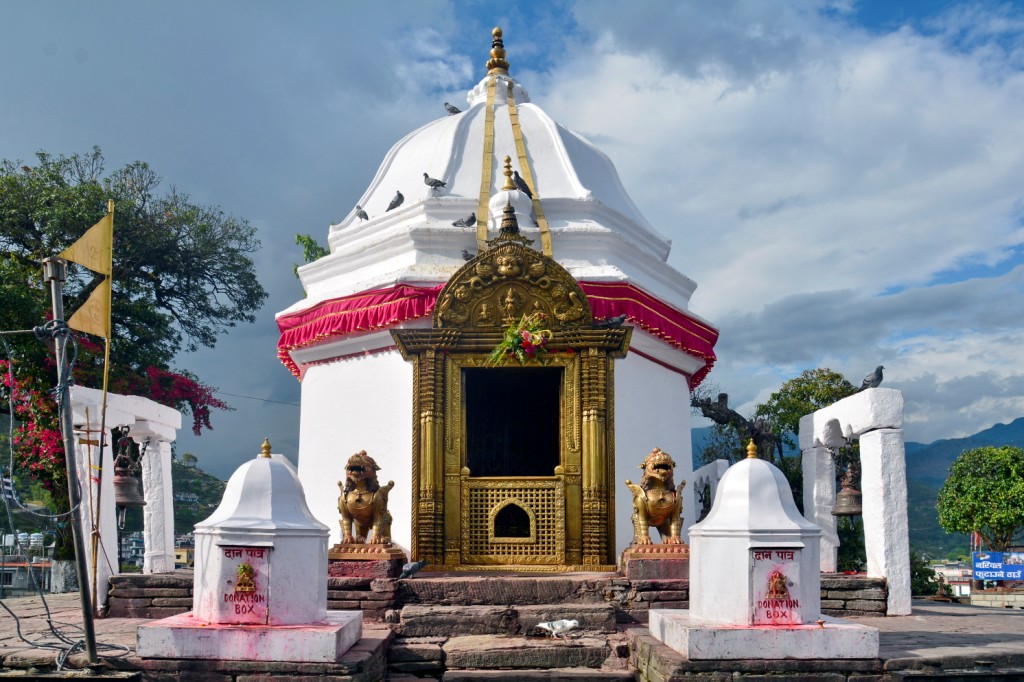Pokhara Sri Bindhyabasini Temple- Nepal

Address
Pokhara Sri Bindhyabasini Temple- Pokhara-Baglung Hwy, Bindhyabasini temple road, Pokhara 33700, Nepal
Deity
Amman: Sri Bindhyabasini (Durga)
Introduction
- Location: Bindhyabasini Temple is situated in Pokhara City, Nepal, at an elevation of about 3,000 feet above sea level. The temple is located on a small hillock between the main old market and Bagar.
- Historical Significance: Considered one of the oldest temples in the Pokhara valley, it is linked to the Bindhyabasini Temple in Vindyachal, Uttar Pradesh, India.
Puranic Significance:
- Legendary Origin: The temple’s history is tied to a divine vision experienced by King Khadag Bum Malla, who dreamt that Goddess Durga commanded him to build a temple in her honor. The deity was later brought to Pokhara by King Siddhi Narayan Shah of Kaski in the 17th Century CE, before the unification of Nepal.
- Goddess Durga: The temple’s primary deity is Goddess Durga, who is revered as the guardian deity of Pokhara, believed to protect the city from harm. The Sanctum houses a Saligrama idol of Durga.
- Local Belief: Some local traditions suggest that Goddess Bindhyabasini is a divine replacement for the eighth child of Devaki and Vasudeva (Lord Krishna), who was exchanged and is now represented by the goddess.
Special Features:
- Architectural Style: The temple is built in Shikhara style, considered older than the more common Pagoda architecture. It features a white exterior with a golden gate.
- Temple Premises: Two golden metal lions stand beside the temple gate, and metal gong-bells frequently create an eerie sound in the background. A large tree is also present on the temple grounds.
- Regulation: The local “Dharmik Chhetra Bikas Samiti” is responsible for the management and upkeep of the temple.
Festivals:
- Fulpati: A major festival celebrated with grandeur.
- Navadurga: A festival dedicated to the worship of nine forms of Goddess Durga.
- Shivaratri: A significant festival dedicated to Lord Shiva, observed with fervor.
Century/Period/Age
17th Century CE.
Managed By
Archaeological Survey of India (ASI)
Nearest Bus Station
Pokhara
Nearest Railway Station
Jayanagar or New Jalpaiguri
Nearest Airport
Pokhara






